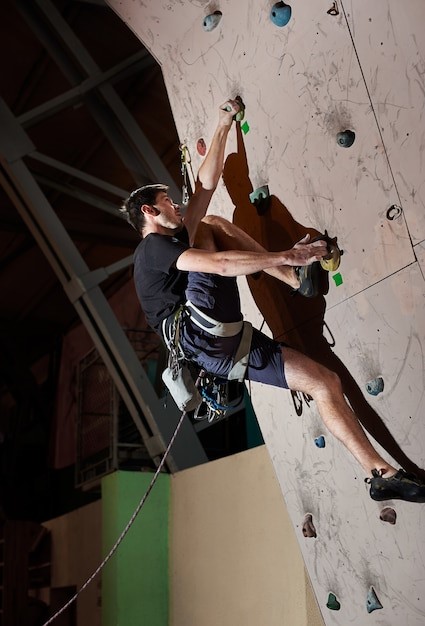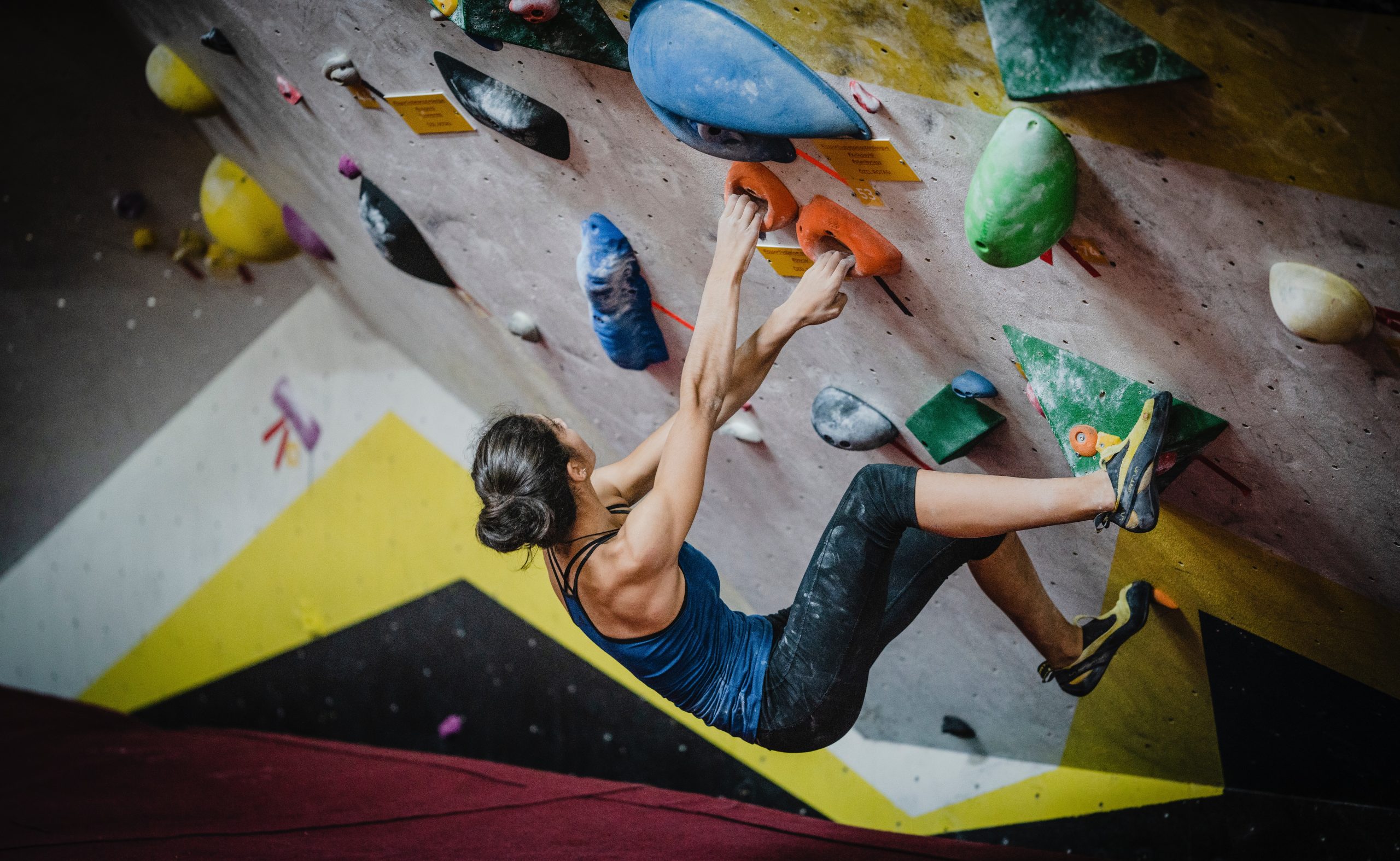Bouldering is a sub-category of rock climbing that involves climbing small, artificial rock formations called boulders. Although it looks easy and fun, many people fail to appreciate the degree of physical exertion required to master this sport.
Bouldering is an excellent exercise because it requires almost no equipment, can be done indoors or outdoors, and you can do it almost anywhere.
However, because bouldering doesn’t require you to use your legs much and doesn’t put much stress on your arms, it probably isn’t the best way to build muscle.
But before you give up hope on your quest for bigger muscles and start bailing on your bouldering sessions, bear in mind that this doesn’t necessarily mean you’re completely doomed. Bouldering is still a useful form of exercise that won’t hurt you in the long run if you keep doing it regularly.
Read on to learn more about whether bouldering will help you build muscle and increase your strength.
What Is Bouldering?
Bouldering is the practice of climbing artificial rock formations called boulders with the aid of ropes, safety harnesses, or other technical equipment. Boulders can be large or small, but are usually of irregular shape and are generally small enough to be handled by a single climber. Bouldering is practiced in gyms, at outdoor locations, and in many indoor gyms.
Other artificial rock formations, called “lines,” can be used as a frame for bouldering. Climbers can either aim for the top of the boulder or for a line on a nearby boulder, which allows for very creative climbing movements. Like vertical climbing, bouldering can be done with either hands or feet. The most common type of bouldering involves using both hands and feet.
What Are the Benefits of Bouldering?
Bouldering can be a great workout because it uses almost every muscle in your body. It involves numerous leg movements that are crucial for climbing and walking. Bouldering will also strengthen your core muscles and your arms because you’ll constantly be pulling yourself up and out of the rock.
Bouldering is also very aerobic, which means it improves your cardiovascular health because your heart has to work a little harder to pump blood through your body.
Boulderers who regularly practice the sports report increased flexibility, increased cardiovascular fitness, increased strength, and improved coordination. Other reported benefits include improved body image, better stress relief, and better concentration.
Can Bouldering Build Muscle?

You can certainly boulder to build muscle, but it’s not the most effective way to do it. You’ll probably be disappointed to learn that although bouldering works many muscles, it doesn’t build much muscle tissue per workout.
In fact, many studies have found that boulderers have less muscle mass than people who climb regularly but don’t boulder. The reason why bouldering won’t help you build muscle is that a high percentage of muscle mass is made up of fast-twitch (power-producing) muscle fibers. These fibers are only active during intense, short-term bursts of activity.
If you want to build muscle, you want to train your muscles to move more consistently. This is best done by running, climbing stairs, or using an elliptical. Bouldering will help you burn calories, but it won’t increase your muscle mass.
Does Bouldering Work Chest?
Bouldering does indeed work your chest muscles, but neither well nor intensely. This is because bouldering is a low-intensity activity that doesn’t require your chest to exert much force. You’ll probably see your pec muscles get a bit stronger while bouldering, but they’ll be far from fully developed.
While bouldering is a great way to work your pecs, it’s not the best exercise for building muscle mass in the chest area. You’ll get more out of those sessions by doing activities like push-ups and pull-ups that work your chest muscles at a higher intensity.
Can You Get Ripped from Bouldering?
While bouldering is great for building strength and gaining flexibility, the large majority of climbers report that it doesn’t help them get ripped. This isn’t surprising when you consider that bouldering doesn’t require significant amounts of weight lifting.
When you boulder, you may be stimulating your muscles to grow at a faster rate, but you’re not building any new muscle. Furthermore, most boulderers don’t even have a basic understanding of how to gain muscular strength or build muscular size, so getting ripped from bouldering is a long shot.
What Muscles Does Bouldering Workout?
Bouldering works many muscles, but it’s most effective at strengthening your arms, core muscles, and legs. Bouldering involves numerous arm movements that are crucial for climbing and walking, and you’ll also get some core work while bouldering.
Bouldering can also be moderately aerobic, which helps improve your cardiovascular health. Bouldering is a great workout, but it isn’t the best way to build muscle. Bouldering is just not intense enough to stimulate significant muscle growth.
How Often Should I Go Bouldering?
This depends on you, how experienced you are, and how much you enjoy the experience. While beginner climbers may get some benefit from moderate amounts of bouldering, it’s difficult to establish a specific amount of bouldering that will yield significant muscle growth among advanced boulderers.
However, most climbers report that they bouldering after they complete their workouts in the gym. In other words, most people report that they boulder when they have time to blow off steam and aren’t training for a specific competition or event.
Can Bouldering Replace the Gym?
Well, on one hand, bouldering is easier than vertical climbing, which is often seen as a threshold test for people who want to compete in elite-level rock climbing.
And bouldering could replace some of the volumes of training that you may want to do in the gym. However, on the other hand, many researchers point out that you’ll need to climb at least four times a week to see any significant increases in muscle growth.
More From Fithealthyweightloss:
